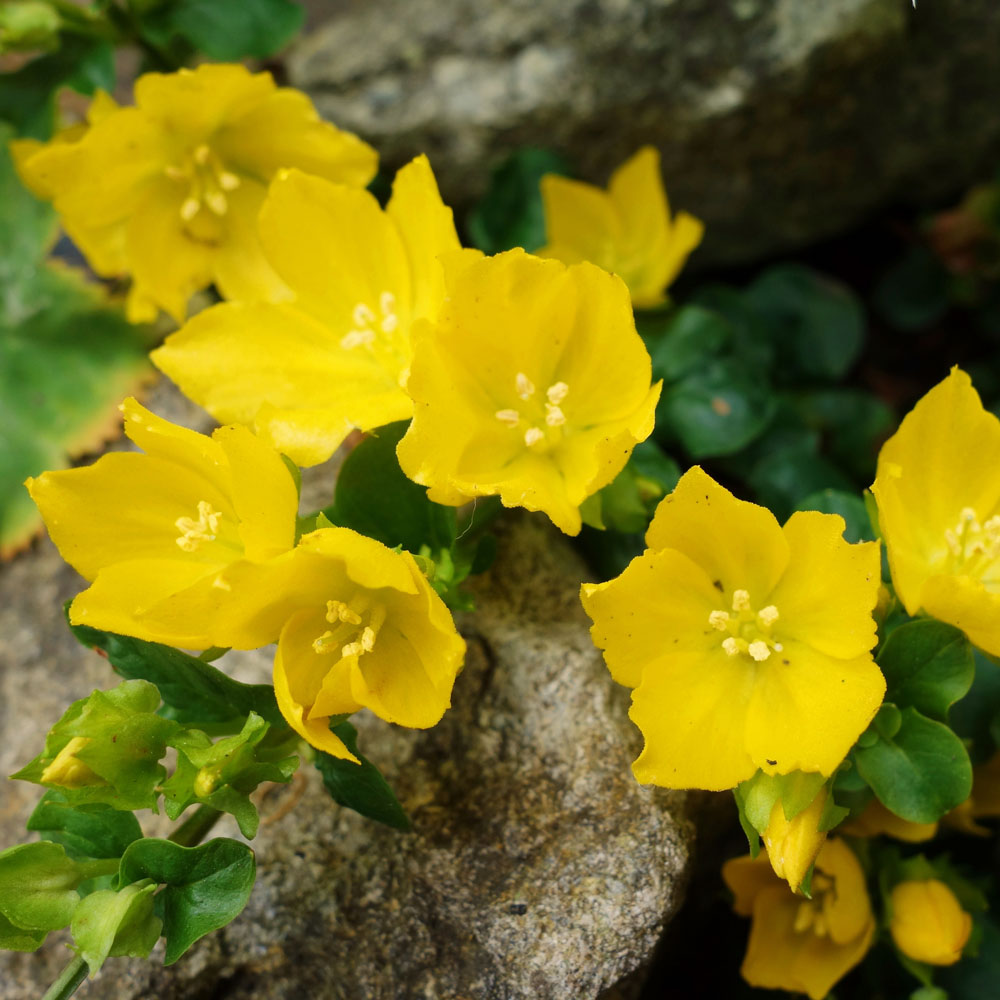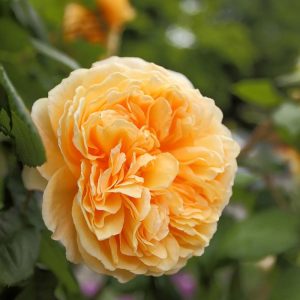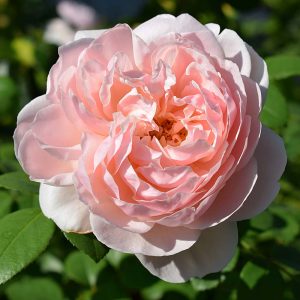Description
Lysimachia nummularia, commonly known as creeping Jenny or moneywort, is a low-growing perennial plant that is native to Europe and western Asia. It is known for its bright green, rounded leaves that resemble coins, hence the name “moneywort”. The plant grows in a dense, creeping habit and produces small, bright yellow flowers in the summer months. Creeping Jenny is often used as a groundcover in gardens due to its spreading nature, and is also suitable for planting in rock gardens or along the edges of water features. It is a relatively low-maintenance plant that prefers moist, well-draining soil and partial shade, although it can also tolerate full sun. Creeping Jenny is known for its ability to adapt to a variety of growing conditions and is generally considered an easy plant to grow.
Key Facts
- Common Name(s):Creeping Jenny
- Hardiness:Fully hardy
- How big will I get? Lysimachia nummularia can grow to a height of 0.1m and a spread of 0.5m.
- Did You Know That:The name “Lysimachia” is derived from the ancient Greek name “Lysimachos”, which means “liberator of a city”. The plant was named after Lysimachus, one of Alexander the Great’s generals, who was said to have used it to heal his soldiers’ wounds?
Plant Calendar
A rough guide to how this plant will change through the year.
| Jan | Feb | Mar | Apr | May | June | July | Aug | Sept | Oct | Nov | Dec | |
| Flowering Time |  |
 |
 |
|||||||||
| Foliage Colour |  |
 |
 |
 |
 |
 |
 |
 |
 |
| J | F | M | A | M | J | J | A | S | O | N | D |
 |
 |
 |
|||||||||
 |
 |
 |
 |
 |
 |
 |
 |
 |
Care Guide

Soil Requirements
Lysimachia nummularia thrives in wet or damp soil with decent drainage or in poorly draining soil. This plant can grow in soil with a wide range of pH levels, it is not picky about the pH level of the soil.

Best Position
Lysimachia nummularia can handle either an exposed or a sheltered position and can cope with either full sun or partial shade.

Maintenance
Lysimachia nummularia is fairly low maintenance and doesn’t require any pruning.

Pest, Diseases and Wildlife
Lysimachia nummularia is generally pest free, and it tends not to have problems with diseases.





